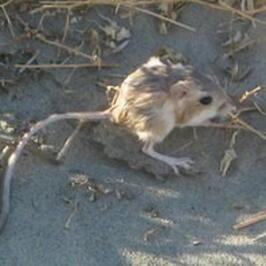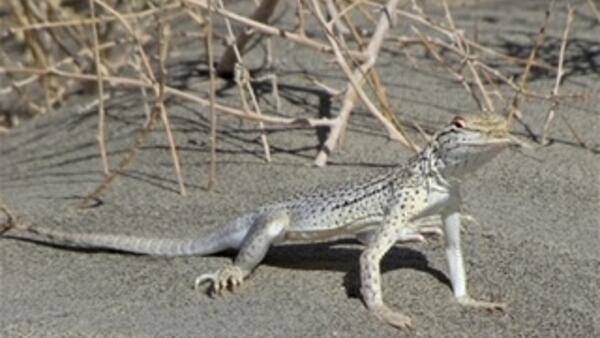Thinking in Deep Time
“Biodiversity starts in the distant past and it points toward the future.” — Frans Lanting
The earliest vertebrates, our distant ancestors, animals with backbones or backbone-like structures were aquatic fish-like creatures, dating back to the Cambrian, some 500 million years ago. True fish came a bit later. The Silurian period, some 400 million years ago, was the age of fishes. Amphibians become established about 330 million years ago during the Mississippian. Amniotes, vertebrates that lay eggs with a yolk, and the precursors of reptiles, mammals, dinosaurs, and birds, show up 310 million years ago during the late Pennsylvanian. Amniotic eggs with water-proof shells allowed vertebrates to explore and adapt to dry land, for the first-time vertebrates broke their dependence on oceans, rivers, and lakes and a whole new world was opened up to them. These land explorers diversified into lineages that would later become mammals (synapsids) and reptiles and dinosaurs (diapsids). We all grew up thinking that amphibians gave rise to reptiles, which is not wrong. It’s just that those early salamanders also gave rise to mammals, dinosaurs, and birds, or at least gave rise to the creatures that would someday diversify into those separate lineages. Reptiles are no more closely related to amphibians than are mammals.
Stem or proto-mammals and dinosaurs (and then birds) took separate paths that led to higher metabolic rates and so higher caloric needs to support their “warm blooded” metabolism. True mammals show up in the fossil record around 220 million years ago. Those early mammals were likely marsupials and monotremes; they had hair and teeth differentiated into canines, incisors, and molars. At least some dinosaurs had feathers, and some of those became the birds we know today. Reptiles retained undifferentiated teeth, had no hair or feathers, and a low caloric, “cold blooded” metabolism. To be clear, on a warm sunny day a lizard’s body temperature can be equal to or warmer than a mammal. It’s just that the lizard regulates its body temperature behaviorally, moving in or out of the sunlight to maintain its preferred temperature. Mammals and dinosaurs (and birds) are warmed by their internal metabolic heaters.
The rise of dinosaurs during the Mesozoic Era, the age of dinosaurs, about 245 to 66 million years ago, kept mammals and terrestrial reptiles “small and lurking in the shadows” to avoid becoming food for the voracious, warm-blooded dinosaur appetites. Nature did experiment with giant marine reptile species during that period, including mosasaurs, ichthyosaurs, and plesiosaurs. Reptiles also spawned giant flying species, pterodactyls. Then, 66 million years ago, an asteroid slammed into the earth off the coast of Mexico’s Yucatan peninsula, killing all the giant dinosaurs, giant marine and flying reptiles, and leaving small dinosaurs (birds), mammals, amphibians, and reptiles to repopulate our planet. Following the asteroid impact, we entered the Cenozoic Era, the age of mammals. At least for a while mammals took over the giant niche, evolving giant mastodons, mammoths, sloths, bears, and armadillos that dominated the Earth until the Pleistocene ice ages.
Small mammals have, for the most part, retained their “lurking in the shadows” nocturnal habits. On a hike in the desert or forest you are likely to see lizards and birds but detecting the presence of small mammals takes a closer look — discovering their tracks or scat. The one group of small mammals that are the exception, that have embraced the sun, are squirrels — chipmunks, marmots, ground squirrels, prairie dogs, and tree squirrels.
Only one group of squirrels has stayed nocturnal — flying squirrels. Of course, flying squirrels do not actually fly, they glide, and they are relatively clumsy at that. So clumsy that even though they are strictly nocturnal and “fly,” they are the favorite prey of northern spotted owls. Seeing a flying squirrel on a night walk is exceedingly rare but check the regurgitated pellets beneath a spotted owl’s roost tree and you can easily detect whether these squirrels occupy that forest.
Flying squirrels live in the San Bernardino Mountains, north through the Sierra Nevada and Cascade Mountain ranges, as well as along the coast in the redwood-Douglas Fir-Western Hemlock forests – almost a perfect match to the northern spotted owls’ range. Folks in the Big Bear Lake area of the San Bernardino Mountains who put fruit and nuts and water at their bird feeders will sometimes have flying squirrels visit those feeders at night. Otherwise, the favorite flying squirrel food at the right season are wild mushrooms, and the squirrels may play an important role of dispersing those fungal spores in their feces.
With most other squirrels being the exception, small mammals are more typically nocturnal, still hiding from dinosaurs, or what today we call birds of prey – hawks and falcons. On sand dunes of the Colorado Desert, one of the driest habitats available, there are often two species of kangaroo rat, desert and Merriam’s, two species of pocket mice, as well as an occasional cactus mouse, desert woodrat, and a (carnivorous) grasshopper mouse. All rarely seen, but their tracks in the dune sand provide a signature of their comings and goings during the night. If there has been a relatively wet spring the kangaroo rats and pocket mice can be extremely abundant. However, there are couple kangaroo rats and a pocket mouse that are considered endangered, notably the Stephen’s kangaroo rat (mostly restricted to the western end of Riverside County) and the little pocket mouse (mostly restricted to the coastal edges of Orange County).
Protecting these species has created a bit of a backlash from people who consider “rats or mice” as vermin. First, kangaroo rats and pocket mice never enter people’s homes – they are endangered because they avoid areas where people live and people are increasingly living everywhere. Second, in this case calling them “rats or mice” is a misnomer. Evolutionarily speaking these species, along with pocket gophers, are remotely, but a bit closer related to squirrels than to the human-loving rats or mice that accompanied colonists from Europe as they invaded the Americas. Perhaps, if named the Stephen’s kangaroo-squirrel, or little pocket-squirrel, humans might have a bit more sympathy for their plight.
While the small mammals have stuck to the night shift, lizards have for the most part occupied the day shift (geckos being the nocturnal exception). On those same Colorado Desert sand dunes there can be diurnal fringe-toed lizards, flat-tailed horned lizards, desert iguanas, western whiptails, side-blotched lizards, leopard lizards, and where the sand is more stabilized, zebra-tailed lizards. Adding the mammalian night shift with the diurnal saurian occupants, plus arthropods, and annual plants and perennial shrubs, desert sand dunes can be the most biologically rich landscapes to be found. Not just compared to elsewhere in deserts, compared to anywhere except tropical forests.
The biological richness we see today is the result of a long history of life on Earth. A history that has included shifting continents, erupting volcanoes, changing climates, multiple ice ages, and at least one or two asteroid impacts. For most of us, deep time thinking, appreciating the passage of hundreds of millions of years, can be challenging. However, when you let yourself do so, it creates an added sense of awe and value to what is already an amazing natural world.
Nullius in verba
Go outside, tip your hat to a chuckwalla (and a cactus), think like a mountain, and be safe

